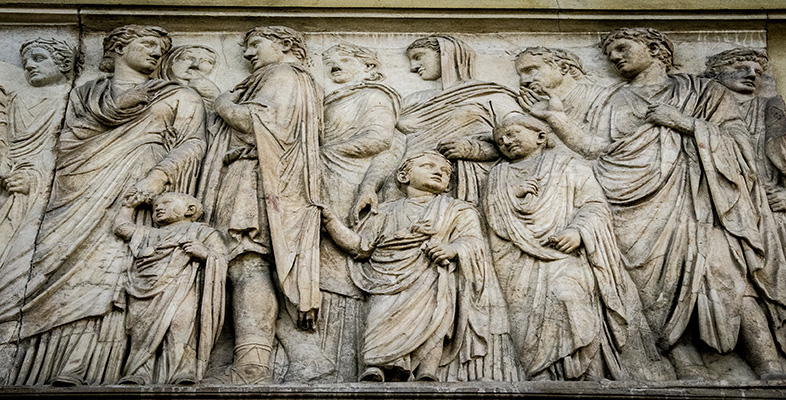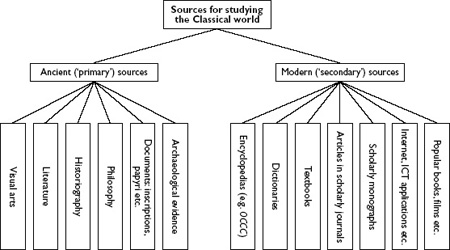2.2 The use of sources
As you saw in the video clips and the introduction to the essays, engagement with the evidence from and about the Classical world that we can still access lies at the heart of exploring the Classical world (as indeed any other place or period in the past). Work with sources is a constant feature of Classical Studies. This section, therefore, introduces you to the available sources, and to ways of working with them.
It will begin by discussing the different types of sources; later you will have the opportunity to practise how best to use sources. Figure 1 below outlines schematically what follows. It’s important to stress that it is a schematic simplification, and you should not rely on it without reading the accompanying discussion, but it should provide a helpful starting point. (Note that the list of sources is not necessarily exhaustive: you may come across other types of sources in your studies.)
The most crucial distinction to make is between ancient sources (the past that survives), and modern scholarship (modern accounts of the past). As indicated in the diagram, they are sometimes called ‘primary’ and ‘secondary’ sources respectively, though one needs to be careful. ‘Primary’ is the most immediate source we have, while ‘secondary’ sources are in turn based on the earlier primary sources. More often than not, the ancient source is primary, and the modern source or better, modern scholarship, is secondary. However, it is worth keeping in mind that you might find an ancient source that itself depends upon an even earlier ancient source. The later source will then be both primary and secondary simultaneously: primary because it is ancient and secondary because it derives from an earlier source. Such a source can be called an ‘ancient secondary source’. An ancient secondary source might be a history of earlier events written in the ancient period, derived from earlier sources that now no longer survive, and so paradoxically an ancient secondary source can also be a primary source. That’s why we tend to use the terms ‘ancient’ and ‘modern’, rather than ‘primary’ and ‘secondary’. Whatever the terminology used, it’s becoming clear that sources are far from straightforward. Let’s pause for a moment and consider what we mean by a ‘source’.

